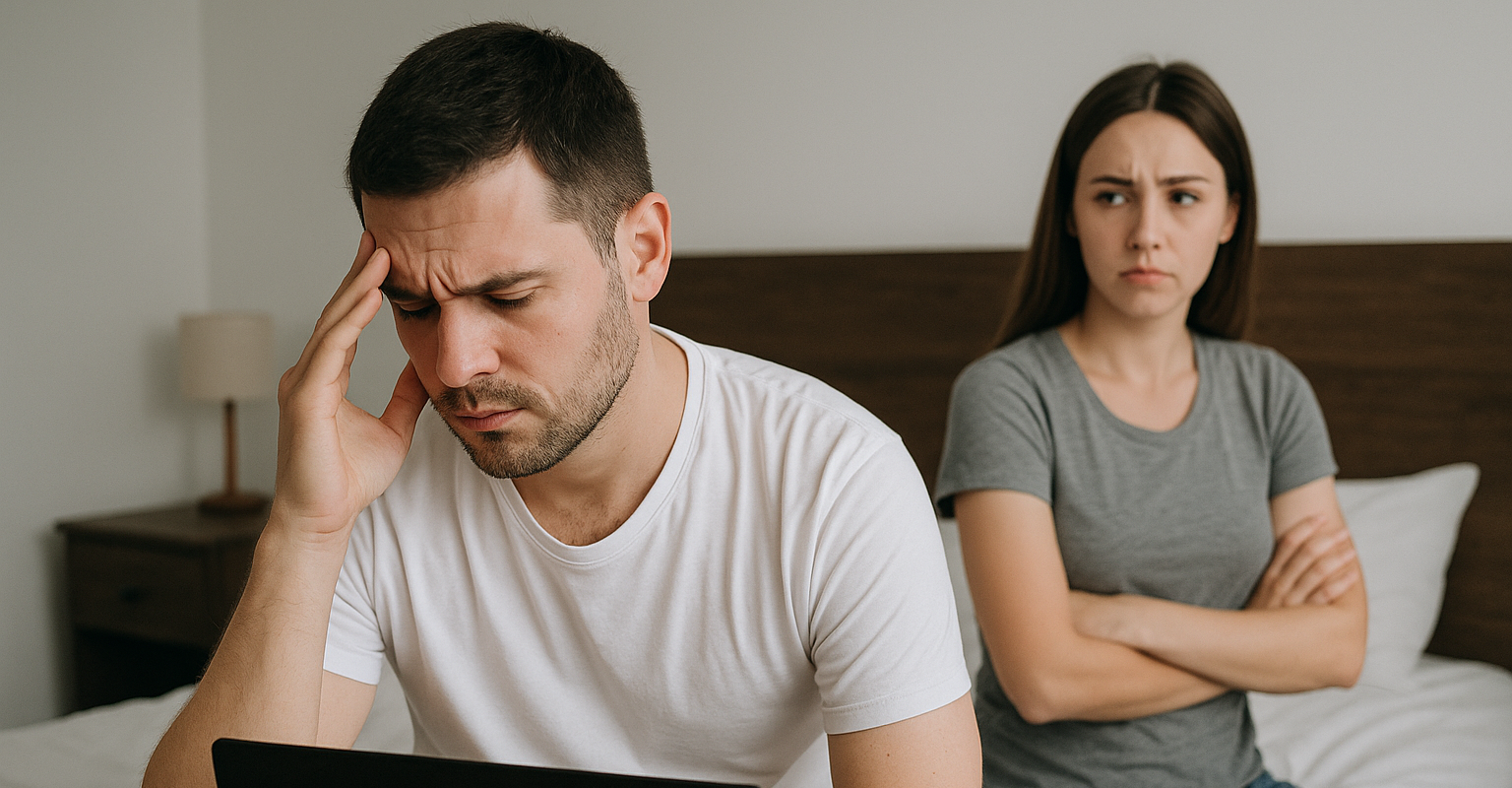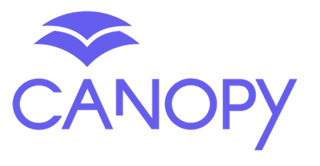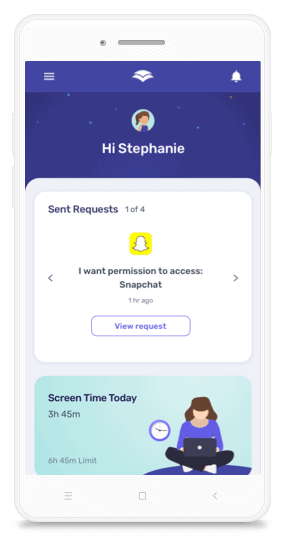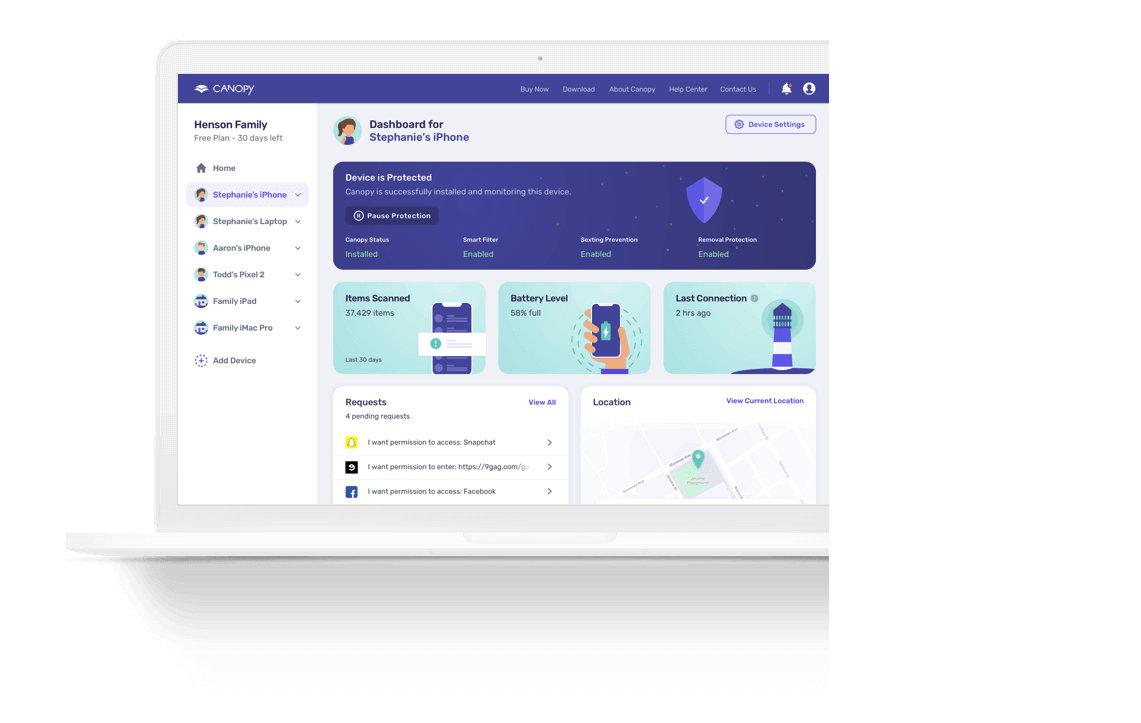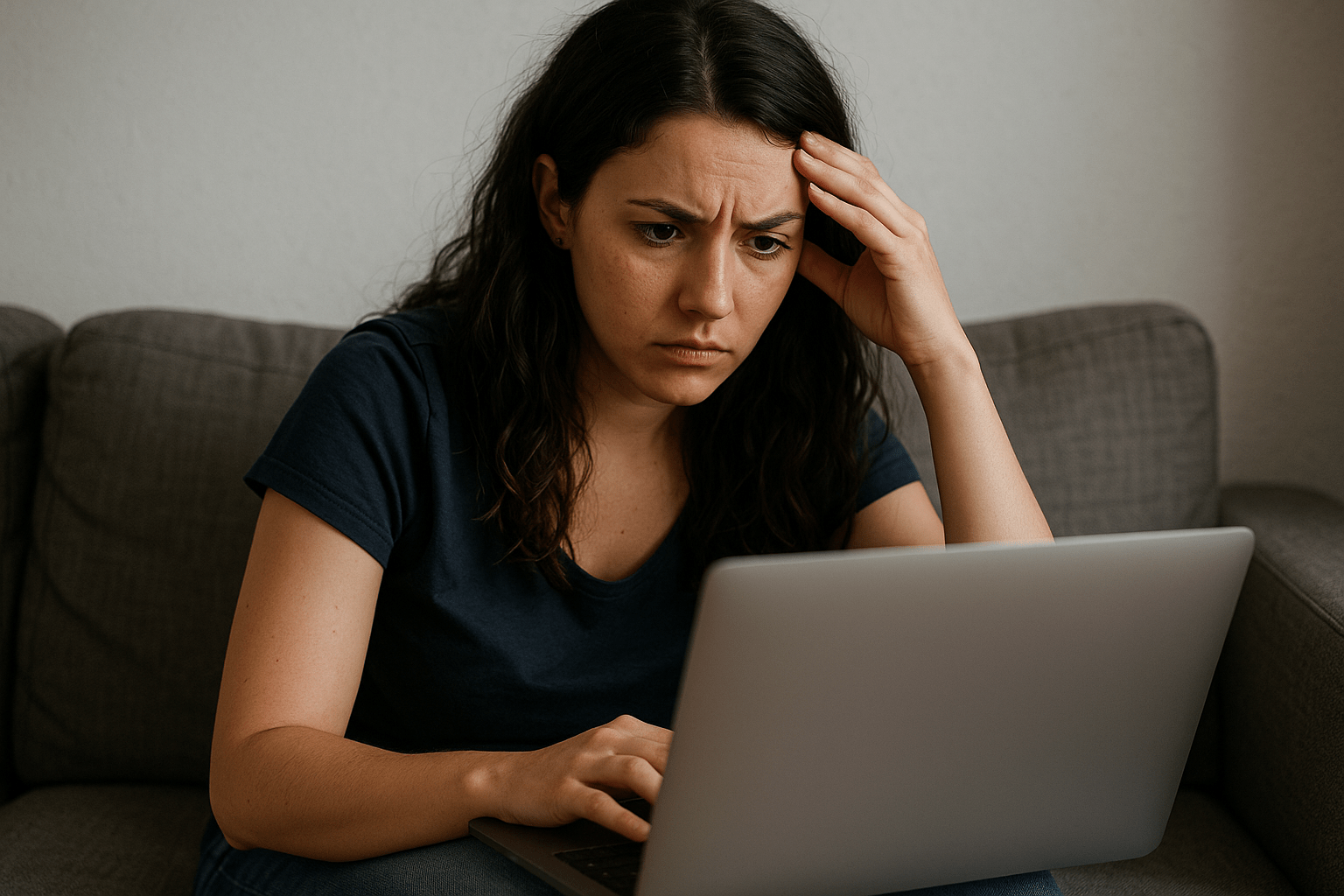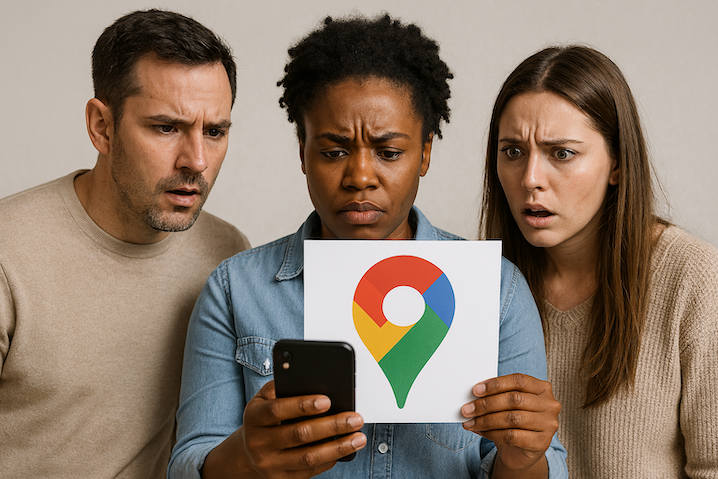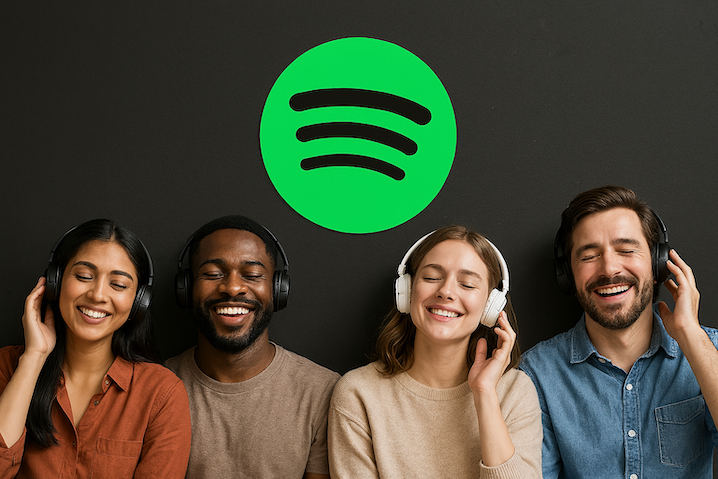Breaking free from porn addiction requires understanding the problem, identifying triggers, and building a healthier lifestyle. This guide outlines practical steps to help you regain control, improve mental health, and repair relationships. Here’s a quick summary:
- Recognize the Problem: Acknowledge how porn use affects your life. Honest self-reflection is the first step toward change.
- Identify Triggers: Pinpoint emotional or environmental triggers like stress, loneliness, or specific times of day.
- Set Boundaries: Use tools like porn blockers, adjust your environment, and plan activities during vulnerable times.
- Build Healthy Habits: Focus on sleep, exercise, mindfulness, and engaging in fulfilling activities to replace old patterns.
- Seek Support: Therapy options like CBT or ACT, along with support groups like SAA, can provide guidance and accountability.
- Use Technology Wisely: Apps like Canopy help block explicit content, track progress, and maintain accountability.
Recovery is a journey that involves consistent effort and support. By addressing triggers, creating boundaries, and seeking help, you can build a more balanced and fulfilling life.
How to Quit Porn – Science-Based Strategies for Porn Addiction
Breaking free from porn addiction isn’t something that happens overnight, and understanding what does porn do to the brain can help explain why the process takes time. It takes time, patience, and consistent effort. But with the right strategies, such as learning how to block porn and building healthier habits, you can regain control and create a healthier relationship with yourself and others. Here’s a practical, step-by-step guide to help you on your journey.
Recognize the Problem
Acknowledging that there’s an issue is the first and most critical step in overcoming porn addiction. While this may seem obvious, many people remain in denial for months or even years, minimizing the impact it has on their lives.
Take an honest look at yourself. Reflect on how pornography use affects your daily life, including its impact on intimacy and porn in relationships. Do you find yourself thinking about it constantly? Have you missed important events or commitments because you were watching? Do you feel irritable or anxious when you can’t access it? These are the tough questions that can help you understand the extent of the problem.
This acknowledgment isn’t about self-judgment or shame. Instead, it’s about recognizing the need for change and focusing on the benefits of quitting porn. Many people struggle with similar issues, and admitting there’s a problem is a sign of strength, not weakness. Remember, shame can often fuel addictive behaviors, creating a cycle where negative emotions push you back toward the very thing you’re trying to avoid.
If you feel comfortable, consider sharing your realization with someone you trust – a friend, family member, or counselor. Speaking openly about your struggle can be incredibly freeing and helps break the secrecy that often surrounds addiction. Plus, having someone in your corner from the start provides both accountability and support.
Once you’ve acknowledged the problem, the next step is to identify what triggers your urges so you can take steps to quit porn forever.
Find Your Triggers and Set Boundaries
Understanding what drives your behavior is key to breaking the cycle. Triggers are the situations, emotions, or habits that lead to pornography use, whether it’s porn on Spotify, porn on Pinterest, or even unexpected Google Maps porn. These can be emotional, such as stress or loneliness, or environmental, like being alone with your devices.
Many people turn to pornography as a way to cope with difficult feelings. For example, if you notice that work-related stress or feelings of rejection lead to urges, this highlights areas where you may need healthier coping mechanisms or even explore alternatives to porn.
Environmental triggers can include things like certain websites, apps, or even specific times of day when you’re more vulnerable. For instance, late nights or weekend mornings might be particularly challenging if those are times you typically indulge.
Once you’ve identified these triggers, it’s time to set boundaries. Here are a few ideas:
- Use a porn blocker to restrict access to adult content on your devices.
- Change your environment. For example, move devices out of your bedroom or remove apps and bookmarks that tempt you.
- Plan activities during your most vulnerable times, like scheduling a workout, calling a friend, or starting a hobby.
Write down your boundaries and strategies. Having a clear plan makes it easier to handle urges when they arise, rather than relying solely on willpower.
Create Healthy Daily Habits
Once you’ve tackled your triggers and set boundaries, the next step is to build a daily routine that supports your recovery. Simply trying to stop without replacing old habits with healthier ones often leads to relapse.
Start with sleep. A consistent sleep schedule is crucial. Aim for 7–8 hours of quality sleep each night. Poor sleep increases stress and weakens your ability to resist urges. Avoid screens before bed and create a relaxing nighttime routine, such as reading, meditating, or listening to calming music.
Set the tone for your day. Instead of immediately reaching for your phone or computer in the morning, begin with intention. Try journaling, setting daily goals, or practicing mindfulness. These activities help you start the day with focus and reduce the temptation to fall into old patterns.
Incorporate mindfulness practices. Spend a few minutes each morning meditating, practicing deep breathing, or simply reflecting. These practices can help you manage stress and build emotional resilience throughout the day. Even five minutes can make a difference.
Regular physical activity is another game-changer. Exercise not only boosts your mood but also provides a healthy outlet for stress and energy. Whether it’s a gym session, yoga, or a walk around the block, find something you enjoy and stick with it.
Explore new hobbies. Activities like cooking, painting, learning an instrument, or gardening not only keep you busy but also give you a sense of accomplishment. These hobbies can fill the time you might otherwise spend on pornography and help rebuild your confidence and self-worth.
Finally, don’t underestimate the power of social connections. Spend time with friends and family, join a club, or volunteer. Addiction often thrives in isolation, so building relationships can provide both emotional support and a sense of belonging.
Structure your day to reduce idle time. While you don’t need to plan every minute, having regular commitments and activities can help you stay focused and less likely to slip into old habits.
Getting Professional Help and Support
While self-help methods can be effective, there are times when additional support is needed to tackle porn addiction. Professional help provides structured tools and guidance that can significantly speed up recovery. Recognizing when to seek this help can mean the difference between struggling alone and finding a clear way forward.
If you’ve tried to quit multiple times without success, or if you’re dealing with feelings of depression or anxiety tied to your attempts, it’s probably time to consider professional assistance. Many people delay seeking help, thinking they should manage on their own, but addiction is often too complex to face without specialized care.
Therapy Options for Porn Addiction
One of the most effective treatments for porn addiction is Cognitive Behavioral Therapy (CBT). Backed by over 2,000 studies and randomized controlled trials, CBT is widely regarded as a leading approach for addiction recovery. It works by targeting the thought patterns and behaviors that keep the addiction cycle alive.
“Cognitive-behavioral therapy (CBT) is the most effective, evidence-based addiction treatment, far outperforming 12-step programs and traditional outpatient psychotherapy.” – Cognitive Behavioral Therapy Los Angeles
CBT sessions focus on identifying and challenging the negative thoughts that drive pornography use. For instance, if you believe porn is your only way to manage stress, CBT helps you see this as a distortion and introduces healthier coping strategies. It also includes behavioral interventions designed to reduce dependency on pornography. This might involve creating action plans for managing triggers, establishing new routines, or practicing relaxation techniques.
Another important aspect of CBT is values clarification, where you identify what truly matters to you – like your relationships, career, or personal growth – and use those values to guide your decisions. When you’re clear on your priorities, making choices that align with your recovery becomes easier.
CBT also provides skills training, equipping you with tools like mindfulness, emotional regulation, and distress tolerance. These skills act as a “recovery toolkit” that you can rely on when challenges arise.
Another therapy option is Acceptance and Commitment Therapy (ACT), which focuses on how you react to urges rather than trying to eliminate them. Instead of fighting unwanted thoughts, ACT teaches you to acknowledge them without acting on them. This approach has shown impressive results: in one clinical trial, participants experienced a 92% reduction in pornography viewing after just 12 sessions, with 54% stopping entirely by the end of treatment.
Both CBT and ACT can be done individually or in group settings. Individual therapy offers personalized attention, while group therapy provides the added benefit of connecting with others who share similar struggles. Together, these approaches create a solid foundation for recovery.
Support Groups and Peer Networks
While therapy addresses the clinical side of addiction, support groups offer something equally important: connection. These groups create a sense of community and accountability, helping you feel less isolated in your journey.
Sex Addicts Anonymous (SAA) is a well-established network for those dealing with sexual addiction, including pornography. SAA’s 12-step program focuses on admitting powerlessness over addiction, seeking help from a higher power, and making amends for past behaviors. One unique feature of SAA is the sponsorship system, where a more experienced member supports you through your recovery. Having someone to lean on during tough moments can make a big difference, especially early on.
Online support groups are another great option, offering anonymity and 24/7 accessibility. These communities are especially helpful if you’re not ready for in-person meetings but still want to connect with others who understand your struggles.
SMART Recovery takes a different approach, emphasizing personal empowerment over the 12-step model. It uses cognitive-behavioral techniques to help participants develop practical coping skills, making it a good fit for those who prefer a more science-based, self-directed path.
Support groups not only reduce feelings of isolation but also provide practical advice and accountability, reinforcing your commitment to recovery. Paired with professional therapy, these networks can be a powerful resource.
Long-Term Recovery and Preventing Relapse
Recovery from porn addiction is an ongoing process, not a one-time achievement. Understanding this from the start can help set realistic expectations and prevent feelings of failure if setbacks occur. Relapse isn’t the end – it’s part of learning and growing.
Long-term recovery builds on strategies like recognizing triggers and setting boundaries, integrating them into daily life. Ongoing therapy plays a crucial role here. Even after initial success, regular check-ins with a therapist can help you navigate new challenges and continue developing healthy coping mechanisms. Some people find monthly or quarterly sessions helpful for maintaining progress.
Relapse prevention planning is another vital tool. This involves identifying your personal risk factors and creating detailed strategies for handling them. It’s not just about avoiding triggers; it’s about knowing exactly what to do when you encounter them. Your plan might include calling a trusted person, engaging in specific activities, or practicing self-care when you feel vulnerable.
As you progress, lifestyle integration becomes key. Building a life that naturally supports your recovery – through regular exercise, meaningful work, healthy relationships, and fulfilling hobbies – makes it easier to maintain sobriety. When your life feels full and satisfying, the pull of pornography diminishes.
A strong support network beyond formal therapy or groups is also essential. Trusted friends, mentors, or communities with shared interests can provide additional layers of connection and encouragement. The goal is to create multiple sources of support so you’re not relying on just one.
Finally, regular self-assessment helps you stay in tune with your emotional and mental well-being. Weekly check-ins about stress, relationships, and overall satisfaction can alert you to imbalances before they become bigger issues. Many people notice that porn urges increase when other areas of life feel out of sync, so staying aware can help you address problems early.
Seeking professional help is not a sign of weakness – it’s a smart, proactive step. Recovery is challenging, but with skilled professionals and supportive peers by your side, you can build a more fulfilling and balanced life. The effort you put into recovery pays off not just in overcoming addiction, but in creating a life that feels genuinely rewarding.
Using Digital Tools for Recovery
Technology can either fuel or help combat porn addiction. When paired with therapy and lifestyle changes, digital tools can create protective barriers and minimize exposure to triggers. Today’s content filtering and accountability software go beyond basic website blockers, offering advanced features tailored to individual needs.
These tools are most effective when part of a broader recovery plan. Combined with therapy, support groups, and healthy habits, they can help maintain boundaries essential for long-term recovery. One option worth exploring is Canopy, a tool designed to seamlessly fit into your recovery strategy.
How Canopy Supports Porn Addiction Recovery
Canopy employs real-time AI-powered filtering to detect and block explicit material instantly, outperforming traditional keyword-based blockers. This dynamic system keeps you protected from new pornographic content or websites that haven’t yet been cataloged.
It also offers features like sexting prevention, which automatically detects and blocks inappropriate images in messaging apps, social media, and emails. This reduces unexpected exposure to explicit material that could trigger a relapse. Canopy ensures consistent protection across all your devices – whether it’s a smartphone, tablet, or computer. Considering that over 70% of teens encounter pornography online across various platforms, having synchronized filtering is critical for maintaining digital boundaries.
The app also includes safeguards like a removal prevention feature, which stops users from uninstalling or disabling it during moments of vulnerability. Additionally, its internet downtime management allows you to schedule internet-free periods, encouraging offline activities and healthier routines.
Setting Up Digital Boundaries
Creating effective digital boundaries means systematically addressing all potential access points to explicit content. Start by installing Canopy on every device and configuring it to block adult websites, explicit images, and related categories. Expanding the list of blocked terms can strengthen your protection over time.
Next, take advantage of built-in parental controls on your devices. For iOS, go to Settings > Screen Time > Content & Privacy Restrictions to block adult websites and restrict app downloads. On Android, use Google Family Link or Digital Wellbeing to limit access to explicit material. These native tools, when combined with apps like Canopy, provide layered protection.
Finally, configure content filters on all networks, including mobile data and public Wi-Fi. Just like personal routines, digitally enforced boundaries are essential to keeping triggers at bay.
Using Technology to Stay Accountable
Research shows that individuals using content blockers and accountability software experience fewer compulsive viewing episodes and greater success in overcoming porn addiction compared to those relying solely on willpower.
Real-time alerts are another helpful feature. They notify you or an accountability partner when blocked content is accessed, allowing you to recognize and address triggers before they lead to relapse. Progress tracking tools also let you visualize your journey by highlighting milestones, such as consecutive days without accessing explicit material or reductions in screen time.
For families, Canopy offers management features that help parents monitor their children’s online activity while respecting age-appropriate privacy. Parents can receive alerts about concerning behavior without needing to micromanage every aspect of their teen’s digital life. This approach fosters open communication and trust.
While digital tools like Canopy can significantly reduce exposure to triggering content and strengthen accountability, they’re most effective when integrated into a broader recovery plan. Ultimately, technology is just one piece of the puzzle. True, lasting recovery comes from combining these tools with professional guidance and personal dedication to change. By using these resources wisely, you can build a strong foundation for a sustained recovery journey.
Building Long-Term Recovery
Overcoming porn addiction isn’t just about stopping the behavior – it’s about rebuilding your life with healthier habits and a stronger sense of purpose. Studies show that individuals who commit to a well-rounded recovery approach often experience better mental health, stronger relationships, and a greater sense of fulfillment in life.
A key part of recovery is recognizing that addiction often stems from unmet needs. Whether it’s stress, loneliness, or boredom that led you to rely on pornography, the path forward involves addressing these underlying issues in healthier ways. Building on the self-discipline and digital boundaries you’ve already established, long-term recovery is about continuous growth and making meaningful changes across different areas of your life. This includes replacing harmful habits with constructive activities that help you move forward.
Replace Porn with Positive Activities
One of the most effective ways to move past porn addiction is to fill the gap left by old habits with activities that bring fulfillment and align with your values. When you eliminate a behavior that has been a big part of your routine, it’s important to intentionally replace it – otherwise, the risk of relapse increases.
Consider engaging in activities like physical exercise, creative hobbies, volunteering, or career development. These not only keep you occupied but also help you reconnect with yourself and others:
- Physical exercise: Joining a gym or starting a fitness routine can improve both your physical and mental health. Exercise releases endorphins, which naturally boost your mood and reduce stress – addressing some of the same emotional needs that pornography might have been fulfilling.
- Creative hobbies: Learning a new skill, like playing an instrument or painting, gives you a sense of accomplishment and activates different parts of your brain. These pursuits can be incredibly motivating during recovery.
- Volunteering: Helping others can provide a sense of purpose while keeping you away from triggering environments. Whether it’s working at a food bank or participating in community projects, volunteering fosters positive social connections.
- Career and personal growth: Redirecting your energy into learning new skills or advancing your career can be deeply rewarding. Many people find that quitting pornography frees up mental space that can be used for professional or personal development.
The key is to choose activities that genuinely interest you. If something feels like a chore or punishment, it’s unlikely to stick in the long run.
Stay Motivated and Track Your Progress
Staying motivated during recovery involves setting clear, measurable goals and celebrating your progress. Instead of focusing solely on the ultimate goal of complete recovery, break it down into smaller, manageable milestones.
Use tools like habit-tracking apps, recovery journals, or even a simple calendar to mark your streak of clean days. Visually seeing your progress can be a powerful motivator. Many people find that tracking their journey helps reinforce positive changes and keeps them accountable.
Regular check-ins – whether weekly or monthly – are also beneficial. Reflect on questions like: What triggered urges this week? Which new activities worked best? What support systems helped the most? This kind of self-assessment allows you to refine your approach as you move forward.
Sharing your progress with trusted friends, family, or support groups can add another layer of accountability and encouragement. Having someone to celebrate your wins with makes the process feel less isolating and more rewarding.
It’s important to remember that recovery isn’t always a straight path. Setbacks can happen, but they’re opportunities to learn and grow. Each challenge you overcome strengthens your ability to handle future obstacles and builds confidence in your recovery journey.
Educate Yourself and Your Family
Understanding the effects of pornography on the brain and relationships can be a game-changer, especially when asking tough questions, such as whether porn is bad or exploring how porn addiction in women develops differently. When you fully grasp how pornography impacts your brain’s reward system and your ability to build meaningful connections, the importance of recovery becomes clearer.
- Brain science: Learning about how pornography alters neural pathways, much like substance addiction, can help you understand the challenges of recovery. Concepts like tolerance (needing more extreme content to feel the same level of arousal) and withdrawal symptoms can make the process feel less overwhelming. This knowledge fosters self-compassion and reduces feelings of shame.
- Relationship dynamics: Research shows that pornography use can negatively affect intimacy and satisfaction in romantic relationships. For example, a study published in Frontiers in Psychology found that users often report less pleasure in real-life sexual encounters. Understanding these impacts can motivate you to prioritize recovery and repair any relationship damage.
Including your family in the education process can create a more supportive environment. When loved ones understand that porn addiction is a legitimate issue rather than a moral failing, they’re more likely to offer non-judgmental support. This shared understanding helps reduce the secrecy and shame often associated with addiction, making it easier to seek help.
If you have children or teens, prevention education is crucial. Teaching age-appropriate lessons about healthy sexuality, the unrealistic nature of pornography, and the importance of digital boundaries can protect them from similar struggles. Open conversations about internet safety tips for parents and using tools like parental control apps can create a safer online environment.
Ongoing learning should be part of your recovery plan. Stay informed about new research, attend workshops, and read about healthy relationships and sexuality. Continuous education not only reinforces your commitment to recovery but also keeps you updated on effective strategies.
FAQs
What can I do to manage strong urges to watch porn?
When you feel the pull to watch porn, try channeling that energy into something else. Activities like exercising, diving into a good book, or working on a favorite hobby can be great ways to redirect your focus and ease the temptation.
Another helpful approach is using distraction techniques. Simple actions like taking deep breaths, listening to your favorite music, or stepping outside for a walk can break the cycle of those moments. On the tech side, setting up content blockers on your devices can act as a safety net, limiting access when your resolve feels shaky.
Lastly, don’t hesitate to lean on someone you trust – whether that’s a friend, a family member, or a mental health professional. Having that support system in place can make all the difference in staying on track and managing those urges more effectively.
How does Cognitive Behavioral Therapy (CBT) help with overcoming porn addiction?
Cognitive Behavioral Therapy (CBT) has proven to be a powerful tool in tackling porn addiction, focusing on reshaping harmful thought patterns and behaviors that drive the addiction. By working through CBT, individuals can identify their triggers, adopt healthier ways to cope, and manage the compulsive urges linked to pornography use.
This method also addresses deeper emotional struggles, like stress, anxiety, or low self-esteem, which often play a role in the addiction. By following this structured approach, people gain the skills to take charge of their thoughts and behaviors, paving the way for healthier routines and better mental health over time.
How do support groups help with recovering from porn addiction?
Support groups play a crucial role in overcoming porn addiction. They create a sense of belonging, allowing individuals to connect with others who share similar struggles. Through shared experiences, members can exchange strategies, offer support, and hold one another accountable, which helps combat feelings of isolation and encourages steady progress on the path to recovery.
You can discover these groups through local community centers, online platforms, or organizations dedicated to sexual health and addiction recovery. Many offer both in-person and virtual options, ensuring accessibility regardless of your location. These groups provide a judgment-free environment where you can connect, learn effective coping methods, and stay focused on your recovery goals.
